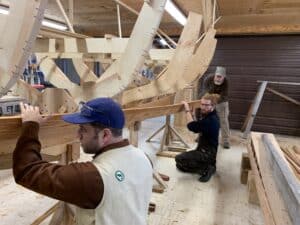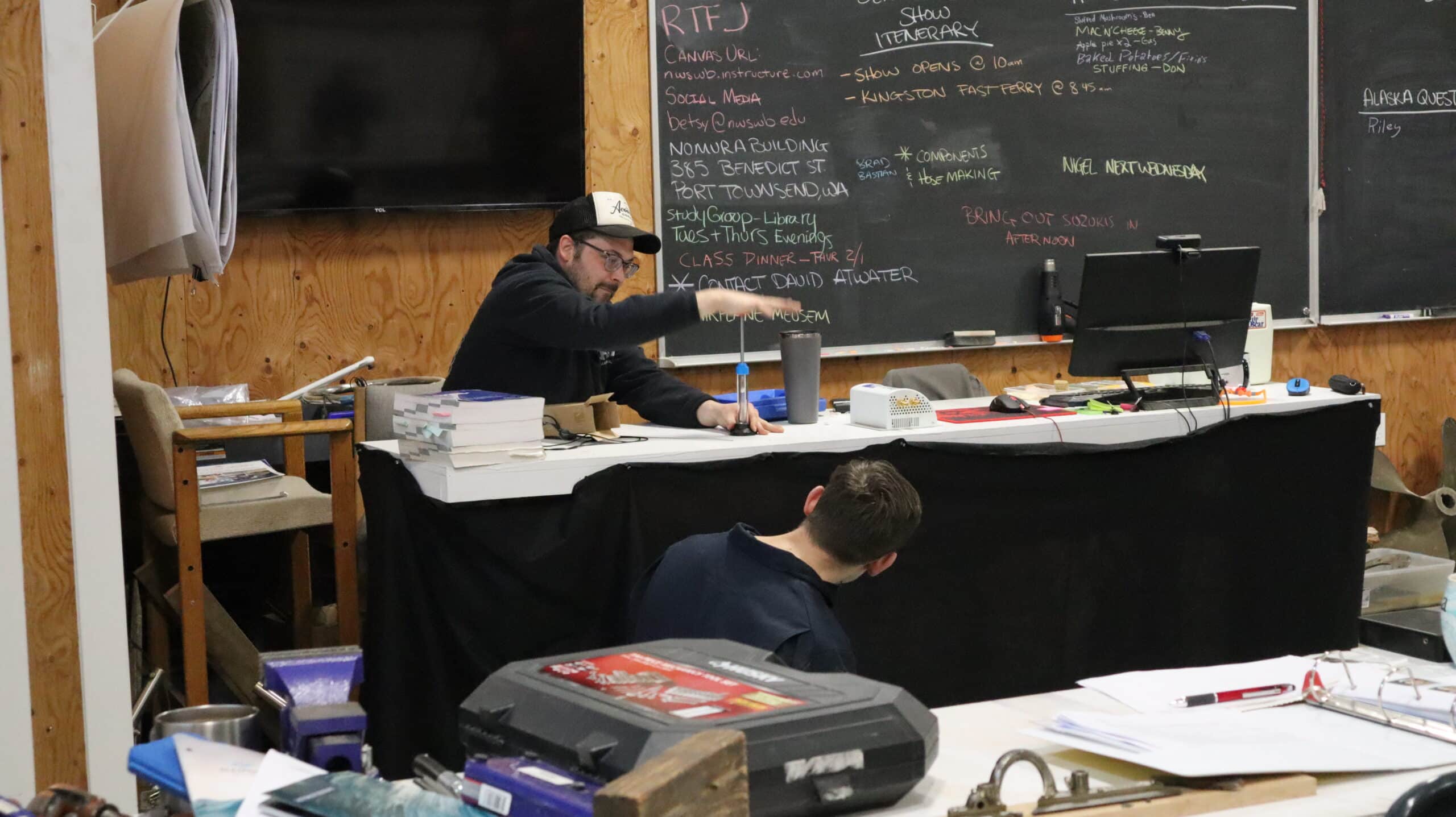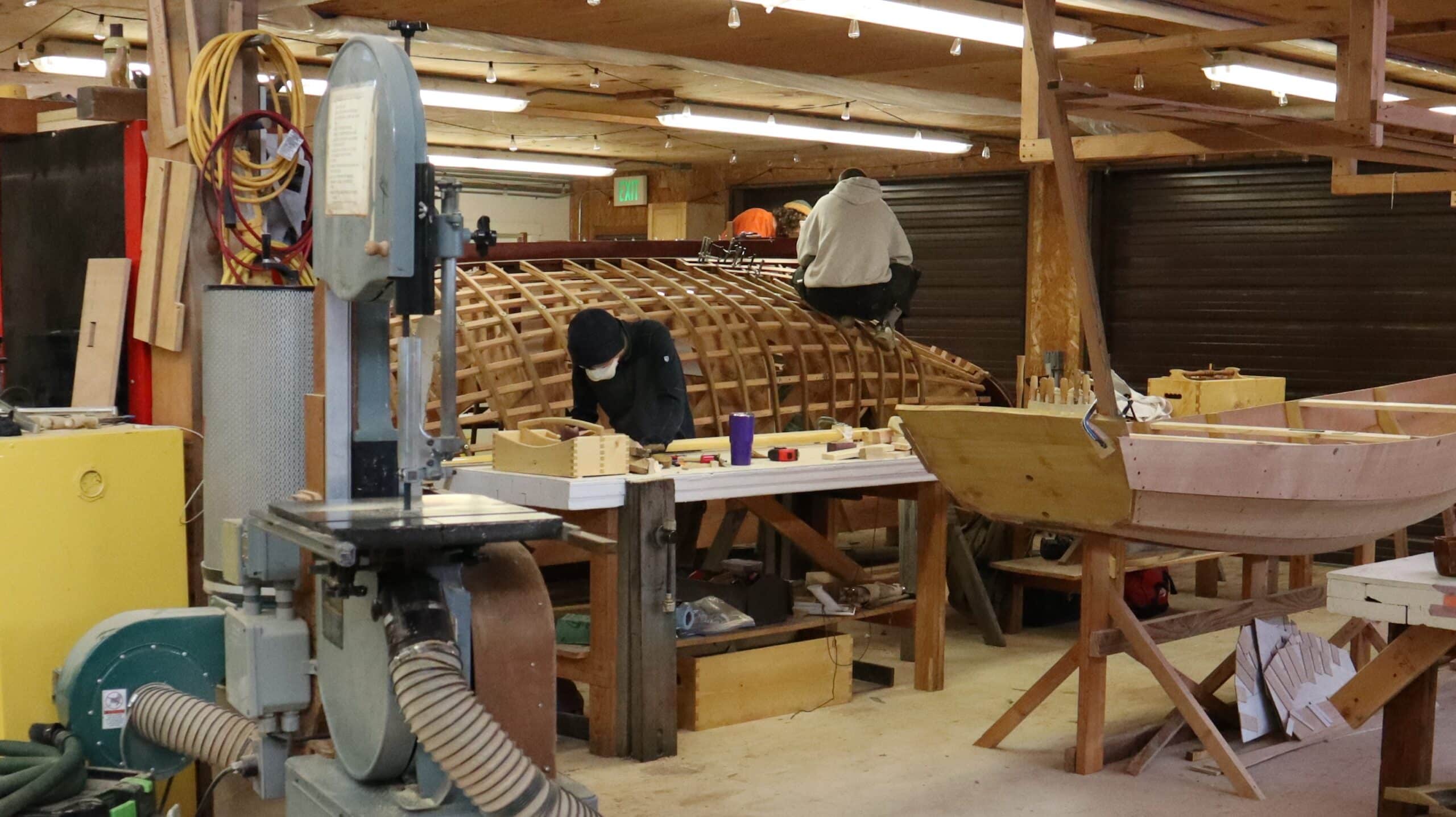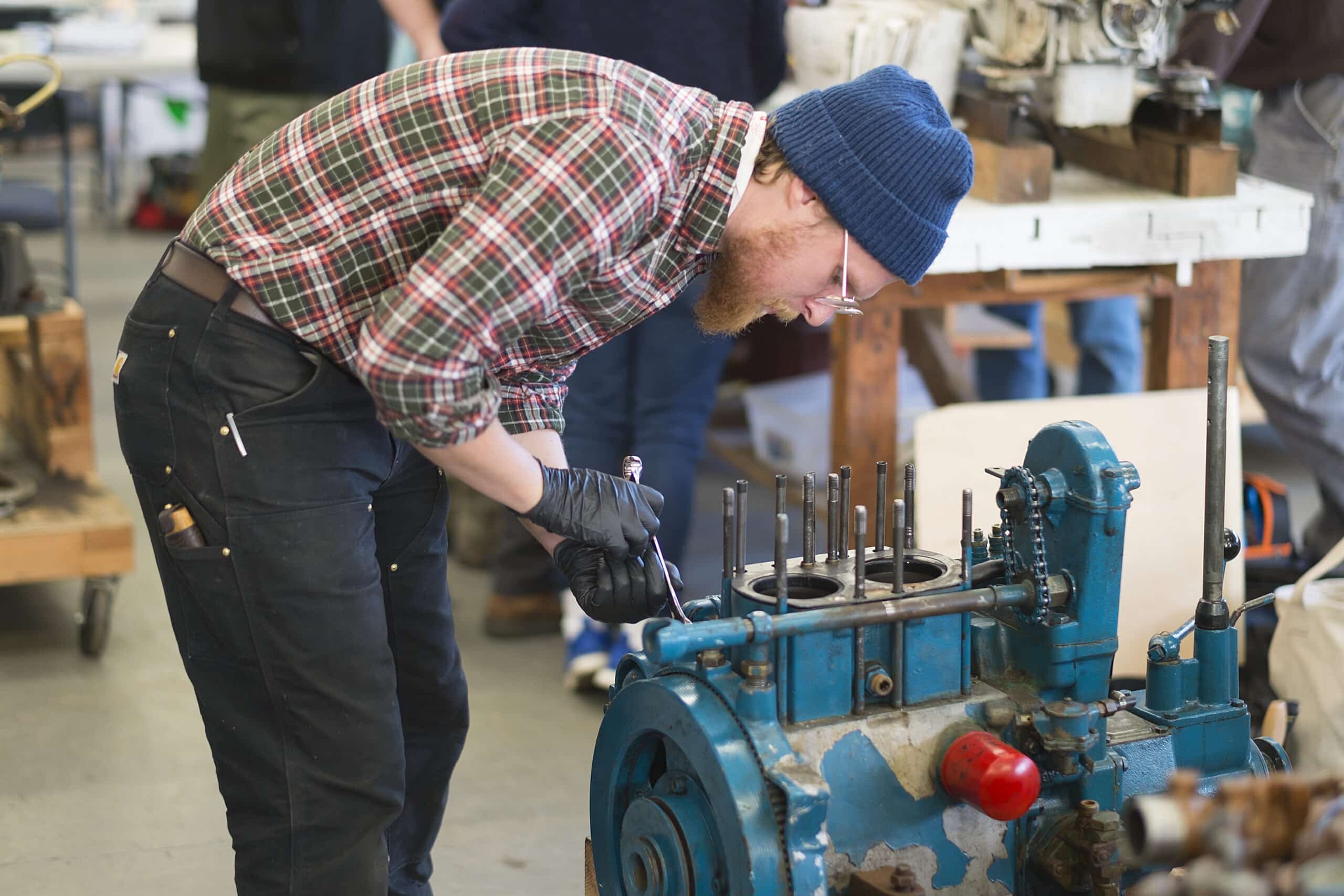National Heritage Areas are based on partnerships: bringing together a range of Tribes, organizations, businesses, and governments around heritage resources and stories. One of our partners is the Northwest School of Wooden Boatbuilding. If you are interested in becoming a partner, learn more on our become a partner page.
About 20 minutes outside of Port Townsend, down a narrow two-lane road leading to a boat launch and a small café, the Northwest School of Wooden Boatbuilding is educating future maritime workers and building wooden boats, both classic and modern.
At the bottom of the hill in Port Hadlock are the main offices of the NWSWB. Within, Deputy Director and Student Affairs Manager Christina Ruben is busy coordinating the re-certification of their accreditation for Occupational Studies degrees. The NWSWB hosts two accredited programs: a nine-month Marine Systems degree or a 12-month Boatbuilding degree.



The nine-month marine systems program teaches students how to create, maintain, and repair any of the dozens of shipboard systems that life on the water might require, from bilge pumps and corrosion resistance to motors and navigation.
The 12-month boatbuilding program is focused on modern techniques of boatbuilding, from drafting and design to shaping and forming the wood that will become the hull, decks, and cabin of a boat.
Students graduating from either program will sometimes go straight into completing the other course for a holistic education on the multitude of systems and work that it takes to create a boat.
The NWSWB was also recently recognized by the U.S. Department of Transportation as a Center of Excellence for Domestic Maritime Workforce Training and Education. There are only 32 of these centers in the United States. NWSWB Executive Director Betsy Davis is optimistic that certification, along with their continuing accreditation and other accolades, “can both serve existing businesses to grow and retain jobs, and also be one of the draws for new businesses looking to move to our region,” said Betsy.
Skills Beyond Boats
The skills taught at the NWSWB range far beyond just boatbuilding, said Christina. According to her, the more abstract educational goal is to enable students to say, “I’m so much better at thinking through all the steps of something I need to do before I can get to the end product,” meaning that students have the problem-solving skills to go into any related trade.
“When students come here, we’d love to see them all go into the boat building trade, but there’s so many different avenues,” said Christina. “I tell people, ‘you might start here, and [in] 10 years, I’m going to see you in Alaska doing something related, but completely different.’”
NWSWB Board Vice President Kathleen Brooker described their goal for students as to “be able to think, draw a plan, schedule, and end up with a beautiful, tangible, usable work of art and technology.” She said that those skills are “really quite an incredible thing.”
A day for a student at the NWSWB in either program tends to start with a lecture. For boatbuilding students, that lecture is held in the mezzanine classroom above their boatbuilding shop space. For marine systems students, that will be held in the more classroom-like environment of the marine systems building. Both spaces are just up the hill from the main offices and library and are large garage-like structures where whole boats can be rolled in or out, depending on the needs of the day.
After lecture times, both classes will proceed to the hands-on portion of the day. Depending on where boats are in the process of construction, boatbuilding program students could be lofting (creating full-sized plans on paper) or working on building the boats, and marine systems students might be in any one of several module-based learning sessions, from learning how to assemble the electronic systems or working in a demonstrative ship’s cabin structure on wheels to practice plumbing in tight spaces.



Walking into the systems classroom, an instructor is using a “fire syringe” to demonstrate the relationship between heat and pressure. A small ball of cotton is placed in the bottom of a tight tube, and the instructor slams the plunger into the tube, igniting the cotton from the sudden increase in pressure. Activities like these are important to understanding the physics behind every combustion engine.
Meanwhile, over in the boatbuilding classroom and shop, students are leaning over the ribs of boats that are under construction. In this large shop space, students are able to bend long pieces of wood to fit over the hulls of boats, and many projects are underway. Students walk around working on different projects, and a massive “ship saw” awaits projects in the back corner of the shop.
Fun and Games
It’s not all study time, however. The NWSWB is sure to include team-building and fun activities for the students. Both programs begin yearly in October, and each year in December, the NWSWB hosts a bonfire with the scrap wood from the prior year. “It’s really dark, and it’s usually cold,” said Christina. “Usually before they leave to go on their winter break, we schedule a bonfire…you’ll see boatbuilding students throw in their first try at a Carlin joint,” said Christina.
That same cabin-on-wheels that marine systems students use to practice their skills is also used annually at Thanksgiving to cook a turkey in the tiny boat-sized oven.



Diverse Backgrounds and Extensive Communities
According to Christina, the students at the NWSWB don’t come from any one career path, interest area, or region. Her students are worldwide and span a range of ages. “Half come from Washington State, half come from outside the state, and that can be any state,” said Christina.
Of course, that means that students are not just commuting from their nearby home. Many need housing nearby, and the small one-room cabins that the school owns on the waterfront are one strategy they’ve found to solve that need. “They’ve been a nice pressure release valve for students who are having a really hard time finding housing,” said Christina.
The question students often face right after attempting to find housing is how they’ll pay for school, and according to Christina, “being accredited, it kind of opens up to some other possibilities, especially around funding.” The NWSWB is eligible for federal student aid, as well as veterans’ benefits. They also host fundraising events for scholarships.
Christina also spoke about the incredibly numerous connections between people and organizations in maritime fields. Both she and the subject of a recent Women on the Waterfront story, Beth Adams, are on the board of a community boatbuilding project just up the hill. “Maritime is so vast, and there’s so many connections to it. And I think this is something that it’s nice to see Washington have,” said Christina. “I think we’re seeing more collaboration, and more agencies pop up that are trying to collaborate around what maritime is, and then learning how to share that.”
More than anything, the staff of the NWSWB are proud of what their students accomplish. Whether it’s a traditionally designed folk boat built on commission, or a speculative build of a skiff that is designed, built, and sailed by one class over the school year, “it’s very impressive how quickly these folks can wrap their hands and heads around it,” said Kathleen.










